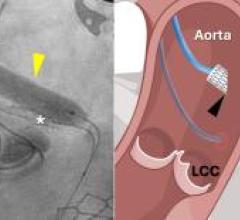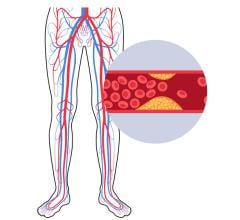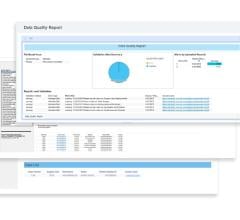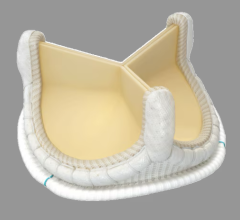
August 30, 2011 – Results from a study presented at the European Society of Cardiology (ESC) Congress 2011 show that transcatheter aortic-valve implantation (TAVI) in low-risk patients met with 100 percent procedural success (versus 95.3 percent in the high Euroscore group (p=0.1). While researchers expected a lower mortality among patients with low Euroscore, the observed difference was much greater than anticipated. In fact, the mortality rates with the Edwards Sapien valve have approached the results with conventional surgery.
The results represent a first step towards a broader assessment of percutaneous techniques in populations at lower surgical risk but without forgetting that surgery is currently the gold standard, said Matthieu Godin, M.D., from the University Hospital of Rouen, France.
“The most interesting point to observe is the absence of death at one month in the low Euroscore group, versus a mortality rate of 11.1 percent in the high Euroscore group (>20 percent), (p < 0.04) and this result is confirmed at one-year with 5 versus 24.8 percent, (p<0.01). While we were expecting a lower mortality among patients with low Euroscore, the observed difference was much greater than anticipated. In fact, the mortality rates have approached the results with conventional surgery,” Godin said.
Aortic stenosis is the most frequently acquired valve disease in adults. Two percent are symptomatic and thus should require aortic valve replacement because, in this disease, a long latency is followed by rapid progression after the appearance of symptoms, with more than half of patients dying within two years. It can be estimated that with the aging population, within 15 years, the number of aortic stenosis patients will double.
After more than 15 years of research, the first-in-man percutaneous valve implantation was performed in the center at the University Hospital of Rouen by Alain Cribier in April 2002. Since then, about 40,000 patients have been implanted worldwide with the use of two different models of valve: the balloon expandable valve and the self-expanding device. The CE mark was obtained for both in 2007. TAVI can today be proposed as an alternative treatment and has recently demonstrated its great efficiency with the results of the pivotal PARTNER-US trial.
Based on the recommendations of both the ESC and the European Society of Cardiac Surgery, most of the registries have so far only included patients with high logistic Euroscore > 20 percent (a system developed to predict the operative mortality of coronary surgery).
In view of the overall good results in this high-risk population, a significant trend to include lower risk patients in Europe has been observed. The last registries have seen their Euroscore decreasing to 15 percent and some prospective trials are planned to include patients whatever their score.
“We sought to evaluate the results obtained in our subgroup of patients with a low Euroscore. It does not mean that the patients were at very low risk for TAVI, since they had been considered as having surgical contraindication, which did not affect the Euroscore (radiotherapy, corticosteroids, thoracic deformation or porcelain aorta). However, the patients were often less sick and younger and it seemed interesting to assess the results in this population,” said Godin.
This study is a retrospective study from all 177 patients implanted with the Edwards prosthesis at the Rouen center between May 2006 and January 2011. Patients were divided into two groups according to their predictive Logistic Euroscore: High Euroscore (>20 percent) vs Low Euroscore (<20 percent).
For more information: www.escardio.org


 January 15, 2026
January 15, 2026 









